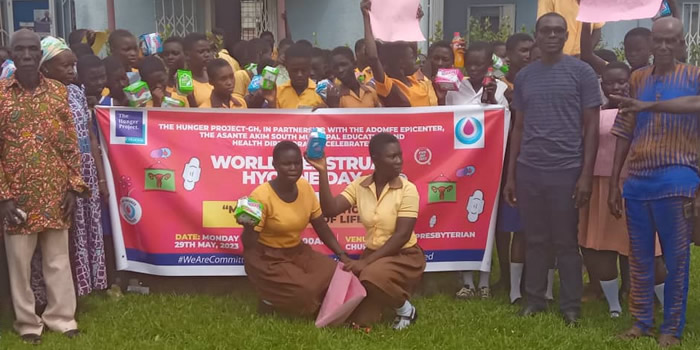

Health Facilities
Health facilities in the district include the following: One (1) hospital, (8) Health Centers 4 Clinics, 85 Trained traditional birth attendants (TBAs) and 100 community based surveillance volunteers (CBSV).
These facilities are not only inadequate but also ill equipped to serve the district, as most of them are constrained by inadequate equipment and other medical supplies. However, the proximity of the district to the Agogo and Konongo eases people living in the district’s ability to access general and specialist health services.
There are three (3) CHPS compound facilities running in the district at Adomfe, Muramura and Kyempo but are yet to go through the formal CHPS formalities. The District Health Directorate has earmarked 15 communities for the CHPS compound. The communities include Bankame/Dickson, Mamponteng/ Dansabroso, Adofokrom/Apraga, Yaw Bronya, Gyadam, Tokwae, Adomfe, Muramura, Pra River, Obokro, Didipekyie, Kyempo, Saabo, Teshi Praso, Nkyesa and Dampong.
The District also has a number of traditional health service providers (herbalists and spiritualists) who are not well organized into formidable association
Health Personnel
Health personnel in the district have improved immensely since 2005. The key personnel in the district’s health delivery system include three (1) Medical Officers, sixteen (3) Medical Assistants, one (1) Pharmacist, 16 Professional Nurses and 15 Midwives. This shows an increase in the number of key health personnel from 56 to 103 since 2005, a clear indication that health service delivery has improve. However, health personnel in the district are largely inadequate with a backlog of 2 Medical Officers and 14 Nurses.
The numbers of the various categories of health personnel in the district are inadequate. The doctor-population ratio of 1? 121601 and high nurse-population ratio of 1:2702 put too much burden on Doctors and Nurses. These high ratios coupled with inadequate logistics support could have negative impacts on the health delivery system in the district. The situation is very alarming and therefore immediate measures should be put in place to increase the number of doctors and nurses and other vital health personnel.
Top Ten Diseases and Reported Cases
The first ten most frequently occurring diseases in the district are shown in Table 1.22. As seen from the table, Malaria and Upper Respiratory Tract Infections (URTI) have been most common diseases in the district over the years, with malaria leading the list followed by URTI. Malaria does not only lead the list, but also its proportionate share of the overall total reported cases of the top ten diseases has been increasing. For instance, in 2008 it accounted for about 44.46% of all cases but this increased to about 45.83% in 2009. Apart from the top ten diseases, Tuberculosis, Buruli Ulcer, Schisto and Yaws are also endemic in the district (see Table)
The position of malaria among the Top Ten Diseases is in conformity with the regional and national trends. It is an indication of poor environmental quality such as the presence of stagnant waters and unkempt surroundings within settlements. Similarly, the prevalence of bilharzias, guinea worms, intestinal worms, buruli ulcer and diarrhoea are indications of inadequate access to potable water, poor personal hygiene and poor environmental sanitation.
Infant Mortality and Maternal Mortality Rates
The infant mortality rate measures the number of infants dying before reaching the age of one year per 1,000 live births in a given year. In other words, it measures the probability of an infant dying between birth and the first birthday. Like the under-five mortality, it also reflects the social, economic and environmental conditions in which children (and others in society) live, including their health care.
Infant mortality rate stands at 59 deaths per 1000 live births per the 2010 PHC results. This shows a decline in the last ten years from 90 deaths per 1000 live births in 2000.
Maternal mortality rate represents the number of deaths of women while pregnant or within 42 days of termination of pregnancy per 100000 live births during a year. The district currently has a maternal mortality rate of 0.8%. This means that the number of women that die during pregnancy or within 42 days after delivery is less than one. This can be attributed to the improved health care as well as the current free pre and post natal care policy for pregnant women by the government which makes health care for pregnant women free.
However, the same cannot be stated for infant mortality rates in the district. This is because of the fluctuating figures over the years. This result could be partly attributed to the overdependence on Traditional Birth Attendants who sometimes lack the requisite ideas on modern ways of treating or attending to patience. Besides one factor that possibly accounted for the fluctuation could be the poor nutrition of babies and even the pregnant women. Malnutrition has therefore accounted for some of the reported cases of infant mortality.To help the curb the issues associated with both the infant and maternal mortalities in the district, the Child Health Policy has outlines the key interventions to be scaled up along the continuum of care. The policy focuses on;
- Improving access to, quality of, and demand for essential services.
- The use of the recent new technologies such as low osmolality oral rehydration solution (ORS) and zinc for the management of diarrhea, and introduction of new vaccines such as 2nd dose measles vaccine, pneumococcal vaccine and rotavirus vaccine through the national Expanded Program of Immunization (EPI) program me.
HIV/AIDS Situation in the District
Juaso District hospital is the only Health facility that undertakes screening for HIV in donated blood and patients suspected so be infected with the disease. By December 2009, 50 HIV/AIDS cases have been reported.
Most people infected by the disease are the youth between the ages of 15 – 49 years as statistics available indicated. This class of people forms the chunk of the working force in the District. This means that the Assembly has to come out with a strategy that will help in solving this problem else in the long run the lab our force needed to increase productivity will be difficult to come by. Some of the strategies needed are increase in the HIV/AIDS awareness campaign programs in the district.
The Ghana Health Service, Ghana Education Service, the District Assembly and its decentralized departments, Traditional Authorities and 25 community Based organizations (C.B.O’s) in the district have over the years been involved in activities aim at reversing the increasing trend of HIV cases in the District.
The district has formed an Association of PLWHA. The members of this group have been meeting once every two months to deliberate on issues concerning their welfare. PLWHA had received 10 days training on income generating activities such as snail rearing, soap making, pomade, mushroom growing and powder making. This program me was sponsored by World Health Organization (W.H.O.)
HIV/AIDS awareness in the district is high according to a survey conducted by the DPCU. However, the high awareness does not translate favorably into behavioral change or safe sex practices as the high incidence of teenage pregnancies remain a matter of deep concern. It is widely believe that many people deny the existence of the disease. Another problem that confronts the Assembly is how to destigmatize perceptions people have on the affected and infected.
Status of District Health Insurance Scheme
Since 2001, the Government of Ghana has been making strenuous efforts to replace cash and carry health financing system with a National Health Insurance Scheme. Government enacted the Act 650 (LI 1809) to support the scheme. The Government has consequently provided the necessary financial, logistical and technical support to the District Assemblies? Which has been given the responsibility to set up a sustainable and affordable scheme that will improve the health status of the people in the district.
Since the creation of the District Health Insurance scheme, series of sensitization programmes have been organized in almost all the communities. Since its establishment the scheme has registered 3000 people in the formal sector and over 35,000 in the informal sector. The district hospital and all other Clinics in the district offer health care services to members of the scheme.
POPULATION MANAGEMENT
Population growth has strong linkages with economic growth and sustainable social development. Population growth increases the quantity of labour without necessarily improving its quality. Hence, population growth rates above 2 percent have found to be counterproductive to growth. The 2.3% population growth of the District is therefore high in development terms. It continues to outstrip the provision of social services and infrastructure.
The fertility rate has also resulted in a youthful population with a high dependency ratio. It is therefore appropriate for the district to formulate appropriate strategies to manage the population to ensure that population growth rate is maintained at a level that will support economic growth and social development.
The district hospital has a special unit for counseling on reproductive health to the youth as well as adults. Other duty performed by the unit is family life education. The major aim of the unit is to ensure that the outgrowing population in the district slows down to meet the rate of provision of social and economic infrastructure in the district. Though family planning services are available at health facilities in the district, patronage is very low. The use of family planning methods is very insignificant. Less than 5% of women of child bearing age practice family planning. This has led to increase in teenage pregnancy in the District.
Date Created : 11/23/2017 3:18:40 AM












 facebook
facebook
 twitter
twitter
 Youtube
Youtube
 +233 593 831 280
+233 593 831 280 0800 430 430
0800 430 430 GPS: GE-231-4383
GPS: GE-231-4383 info@ghanadistricts.com
info@ghanadistricts.com Box GP1044, Accra, Ghana
Box GP1044, Accra, Ghana